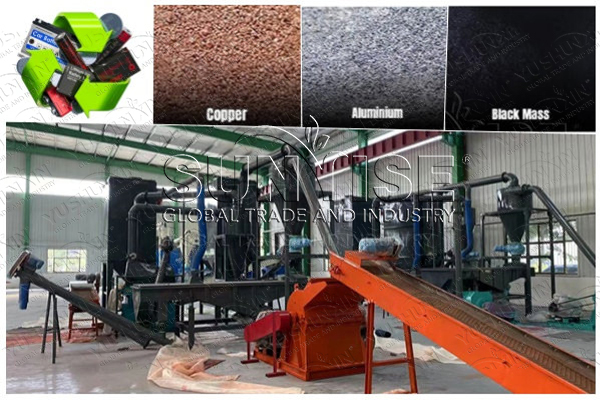Lithium battery discharge equipment is a key technology that evaluates battery performance, life, and safety by precisely controlling current and voltage. Because it plays an extremely important role in the research and development, quality control, safety monitoring, recycling, and reuse of lithium batteries, as well as energy conservation and emission reduction, in addition, our equipment can simulate different discharge conditions and monitor key battery parameters. More importantly, lithium battery discharge equipment is very important in lithium battery recycling, which is not only conducive to the safe operation of electronic waste recycling but also can improve the recovery rate of precious metals. If you are interested in our electronic waste recycling equipment, please feel free to consult us.
How does lithium battery discharge equipment work?
Our lithium battery discharge equipment simulates battery consumption through electronic loads, accurately controls discharge current and voltage, and supports multiple discharge modes such as constant current, constant voltage and constant power. In addition, the equipment monitors battery parameters in real time and adjusts the load through a feedback mechanism to ensure a safe and reliable discharge process. More importantly, it also has overvoltage, overcurrent and overheating protection, as well as data recording and analysis functions, and evaluates performance indicators such as battery capacity, energy density and internal resistance. It is an important tool for battery performance, safety and life testing.
How do you use discharge equipment to treat used lithium batteries for safe recycling and reuse?
If you need to treat used lithium batteries for safe recycling and reuse, you must be careful to ensure safety. Therefore, the discharge equipment plays an important role in this process.
First, you need to set the parameters of the discharge equipment according to the type and capacity of the battery, such as discharge current, voltage limit, etc. Generally, a lower discharge current should be set to avoid overheating of the battery.
In addition, you need to connect the used lithium battery to the discharge equipment correctly under the premise of ensuring safety. Start the discharge program, and the device will control the discharge process until the battery voltage drops to the set lower limit to ensure that the battery is fully discharged.
It will closely monitor the battery temperature during the discharge process to ensure that the discharge equipment has overcurrent, overvoltage and overheating protection functions to automatically stop the discharge to prevent accidents.
After the discharge is completed, let the battery cool naturally to room temperature. Then it is isolated and stored, waiting for the next recycling and reuse treatment under safe conditions.
How do we adjust our discharge equipment for different types and specifications of lithium batteries?
For different types and specifications of lithium batteries, the adjustment of discharge equipment mainly involves the following aspects.
What are the key factors you need to consider when choosing a lithium battery discharger?
When choosing a lithium battery discharger, you should consider several key factors to ensure that the equipment meets specific needs and safety standards. Here are some of the main considerations:



















